Behind the Sickness Diaries
About maximising efficiency, research, and medieval helmets.
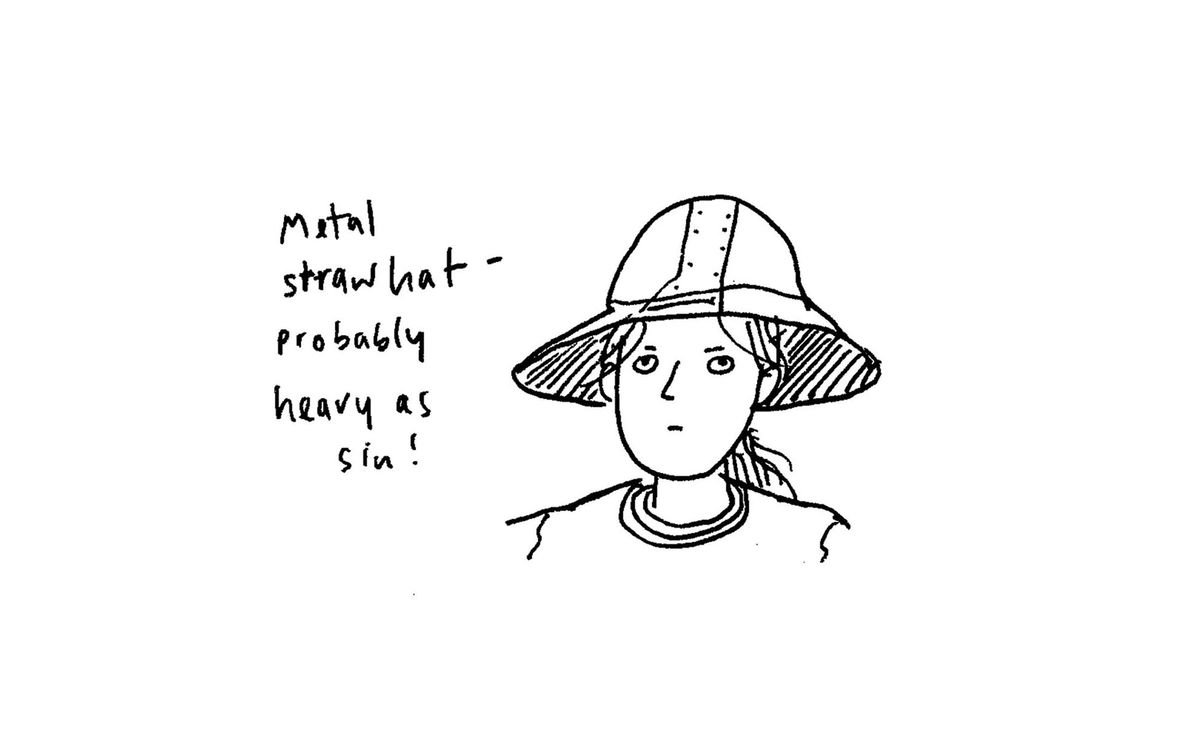
The Sickness Diaries story is finished, but I have a few extra things to share: some sketches and some thoughts. I'll share some progress images and also some of the practical considerations, such as the drawing process.
Let's start with a drawing of a real conversation.
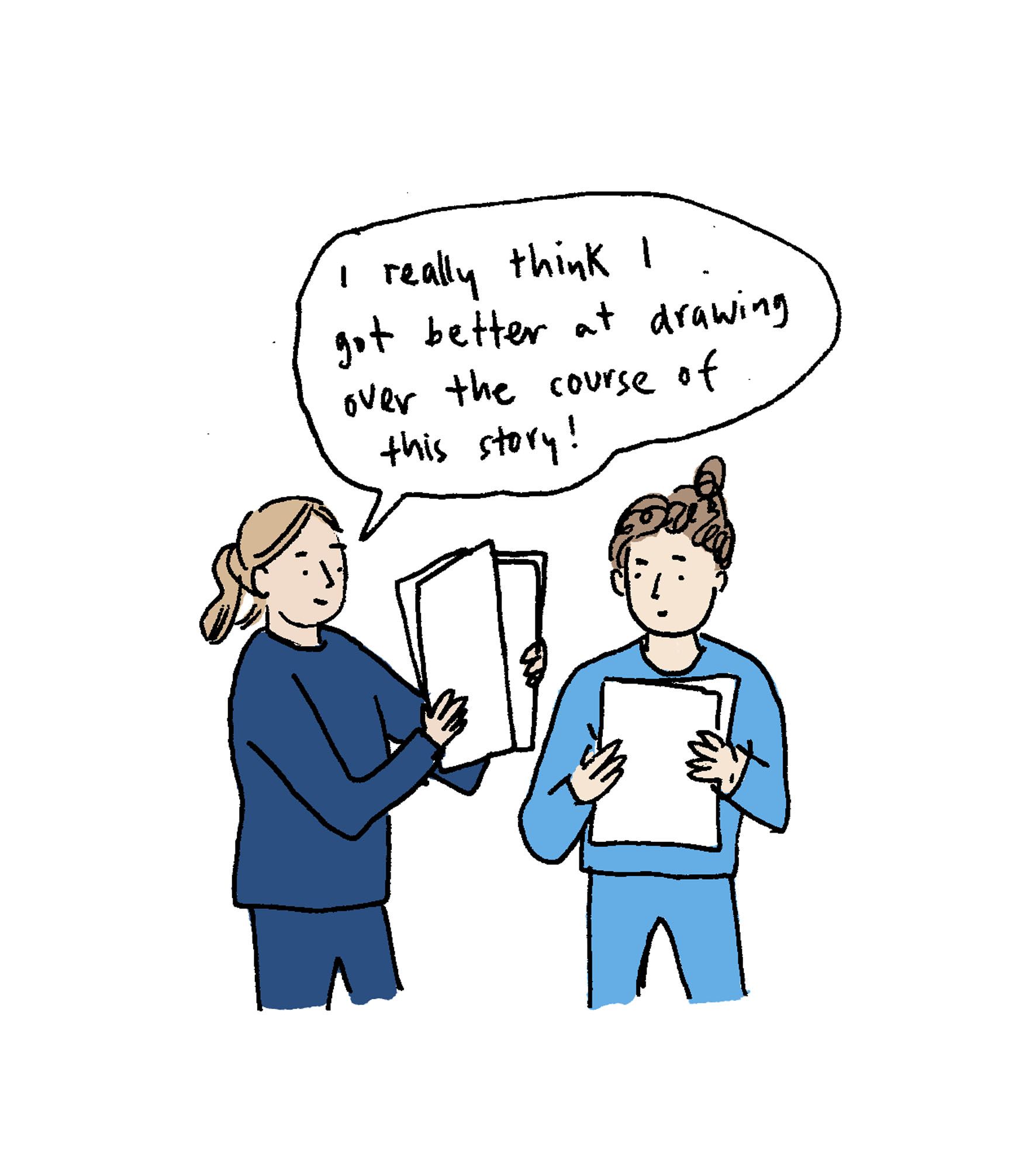
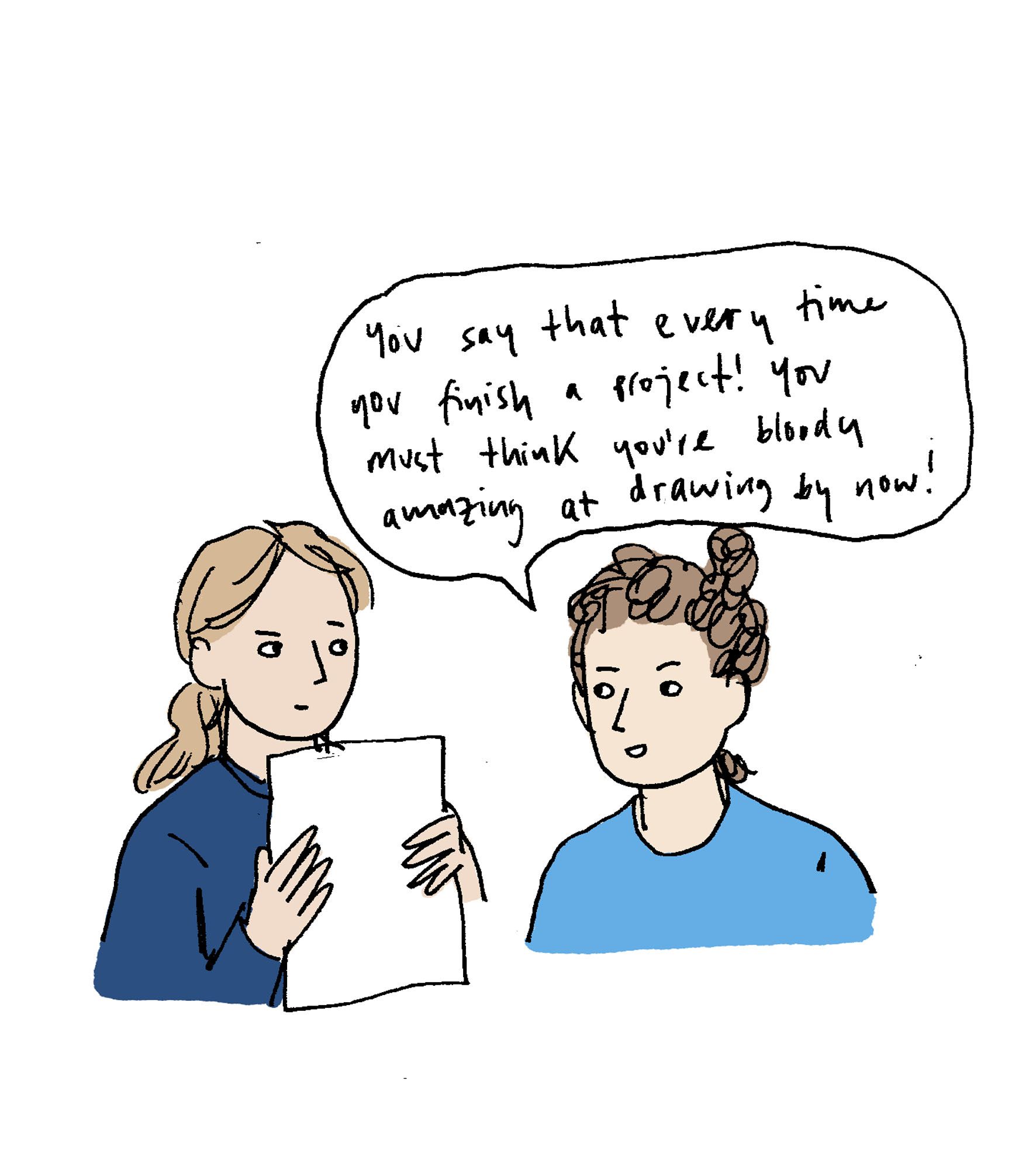
I don't think I'm bloody amazing at drawing, actually. At most, I'd say I am getting good enough to do the things I want to do, and I'm getting faster, too.
When I set out to draw The Sickness Diaries I tried something new in several ways: committing to sharing a part every week put me on a schedule and held me accountable - despite this being by far the longest narrative I've worked on and therefore a challenge in and of itself. While I was finishing off one part, I was already writing and planning the next. In the end, I used 30 pages of A4 paper - 26 for the panels, fitting 6 on each page, and 4 for the chapter illustrations, fitting 2 on each page. A 30-page story doesn't sound like a lot, but in total that's 150 panels + 8 illustrations in two months, so I'm relatively proud of that. It has given me a decent idea of how much work I'm realistically able to produce. When I first started making comics, the idea of writing a four-page story seemed pretty daunting - and now I've just done that several times over. It's quite nice to be able to see that I have learned some things.
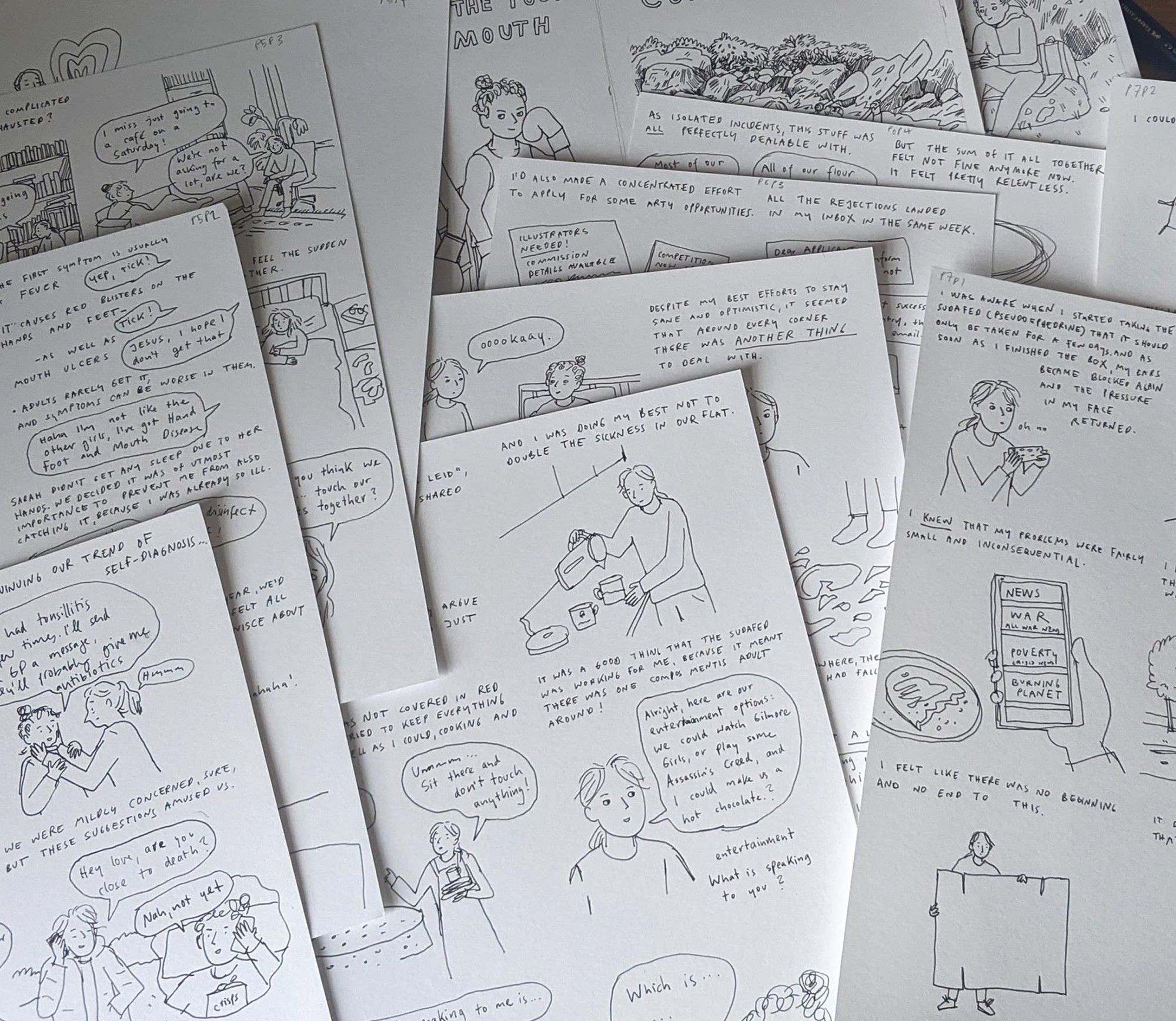
Keep in mind that I have a job, and I was working on the story approximately 1.5 days a week. I suppose if I did not have a job, and I'd been free to work on it 5 days a week, technically I should have been able to do this faster: 8 weeks x 1.5 days = 12 full days. But I know there is no way that I would have been able to write, edit and draw this thing in two weeks. That is the paradoxical balancing act of creativity - you need time, but not too much and not too little. It is necessary to have the space to let things marinade for a few days, but also to be able to immerse yourself fully in the idea. Also, it's nice to have a second pair of eyes on your writing, which can also add hours or days to the process.
The thing that's most important to me in my work is that the writing is solid - in my opinion, you can definitely make up for a bad drawing with some good writing, but it is infinitely more difficult to make up for bad writing with a good drawing. That's not to say that I don't care what the drawings look like - it's just that instead of asking myself how I can make things look the best, I ask myself what is the least amount of effort I can get away with to get the idea across? This approach tries to balance quantity with quality in a time-effective way.
To maximise efficiency, I developed a new way of working. I used to draw my entire comic out in pencil, then go over that in ink and use an eraser to rub out the pencil lines. Having recently bought a light box, I am now able to do a pencil drawing on a scrap piece of paper and do the ink drawing on a clean piece of paper - no erasing needed, and I don't bother pencilling in the text anymore. This has sped up how I work significantly. See below:
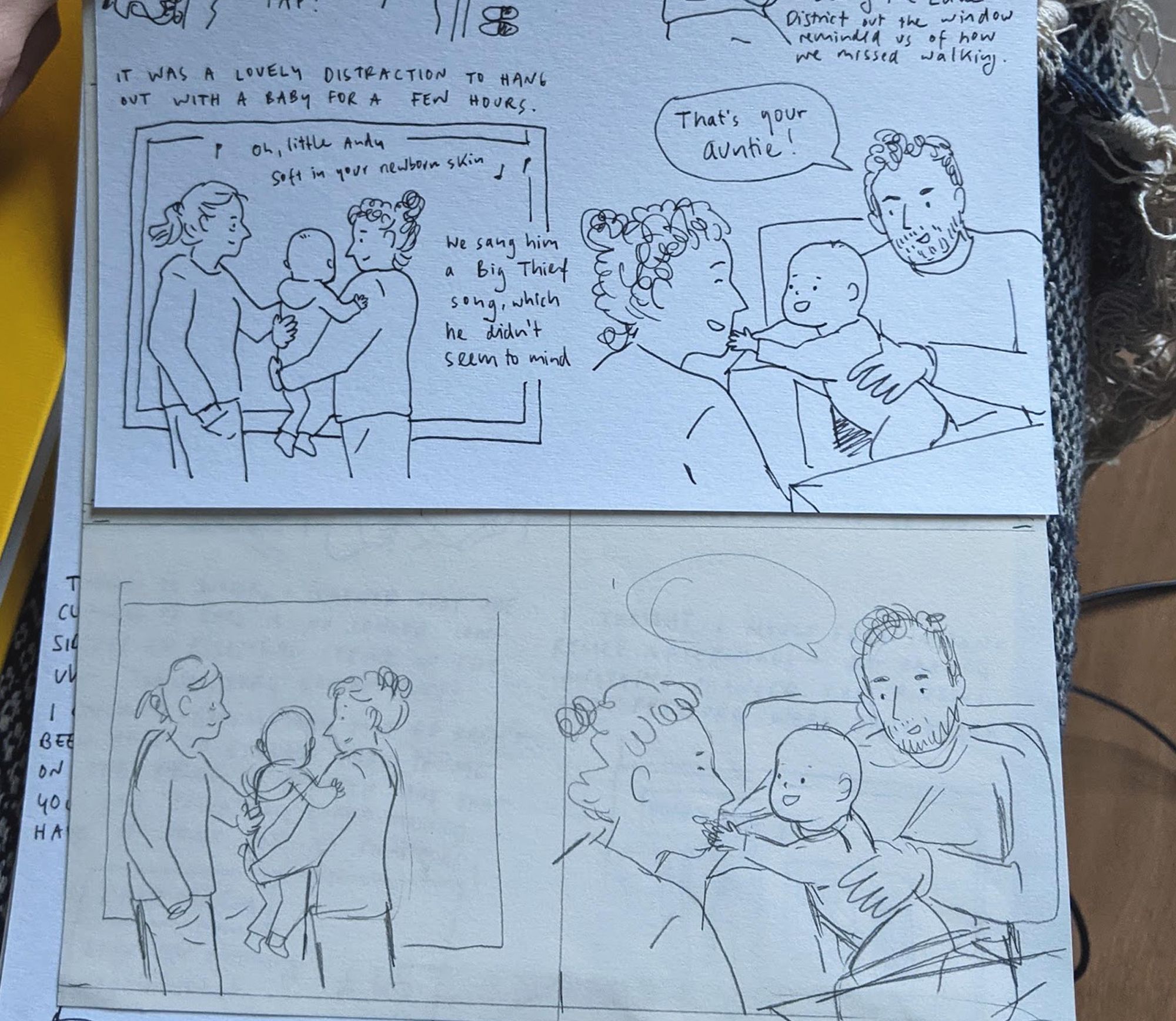
If I'd had more time, the drawing is what I would have improved - I might have drawn nice page layouts or panels instead of just having untethered blobs in empty space. Things might have been coloured in a consistent and neat fashion. I only let myself go wild on the chapter illustrations (by wild I mean, I let myself think about composition and details, I am realising as I am typing this that this in fact does not sound wild at all). It took me about as long to do one of these drawings as it did to draw whole pages of the comic. Below is the process from thumbnail -> pencil sketch -> ink drawing -> colour.
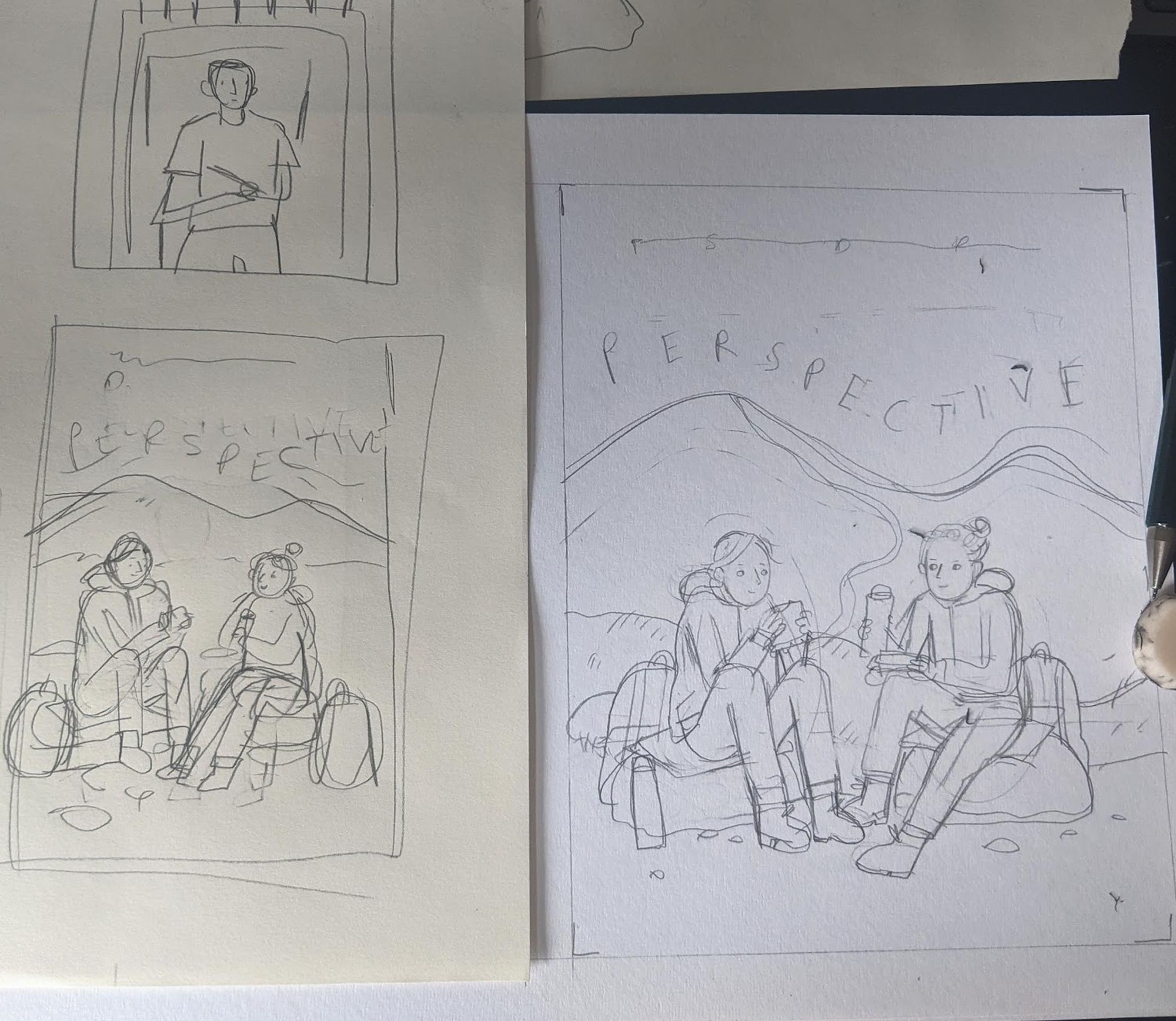
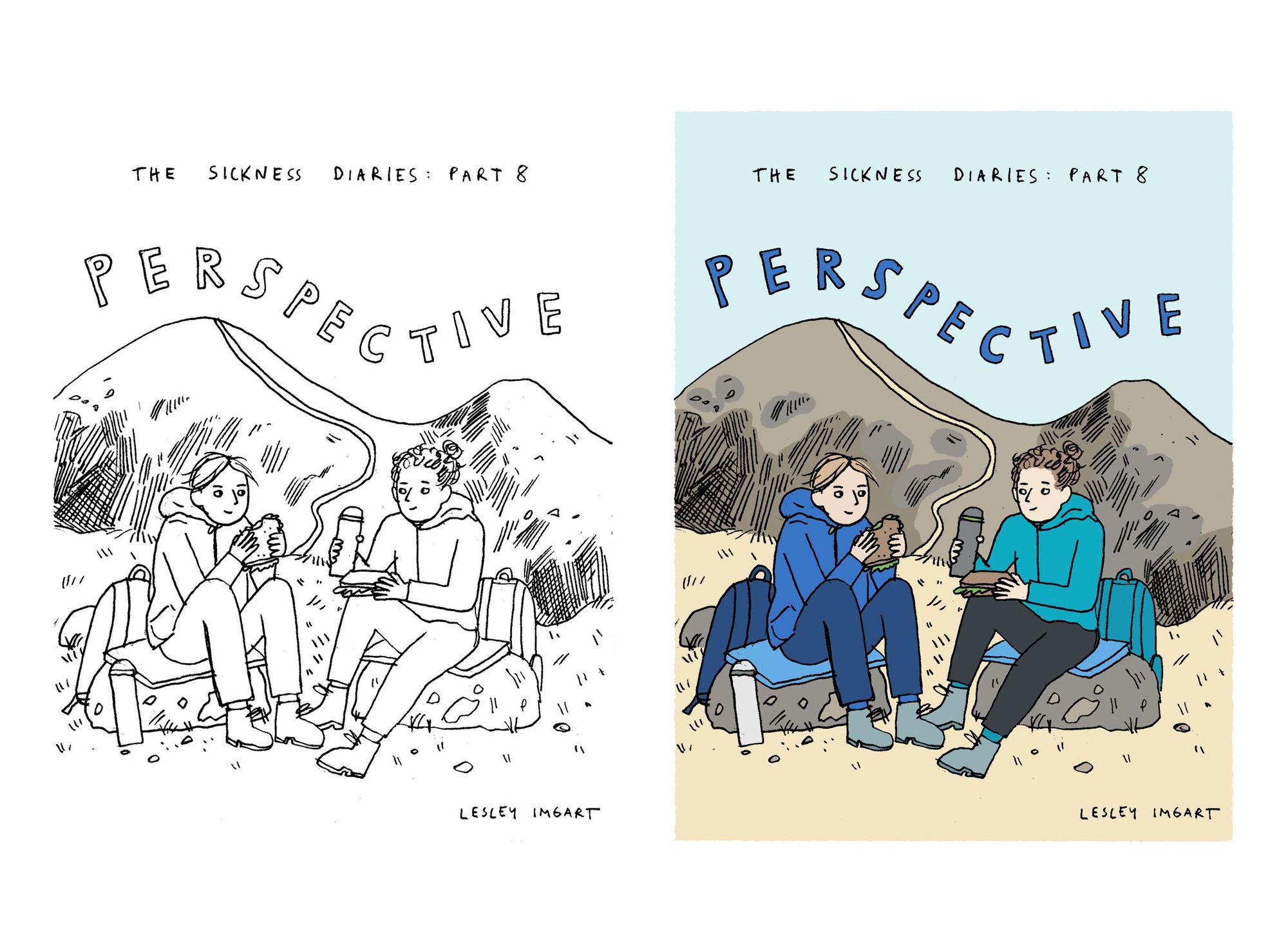
It's extremely time consuming to make things look nice, but also very fun.
Another aspect of making the comics that I don't talk about very much is the research phase. Once I've written a loose script for a comic, I might notice that there's certain things I don't know very much about and would like to research. Or, I might just need a reminder or a reference. Take, for example, the Mark Rothko calendar we had last year. With the calendar long in the bin, I simply used Google ("mark rothko 2022 calendar") to look at the paintings featured in that calendar - to make sure that my drawing wouldn't be too far off reality. I had vaguely remembered that the painting consisted of two separate greys, and sure, I knew this wouldn't be a very detailed drawing. You might even say that this detail doesn't really matter - but I am happiest when I am sure that something is right. I stand by this page of the calendar being depicted accurately!
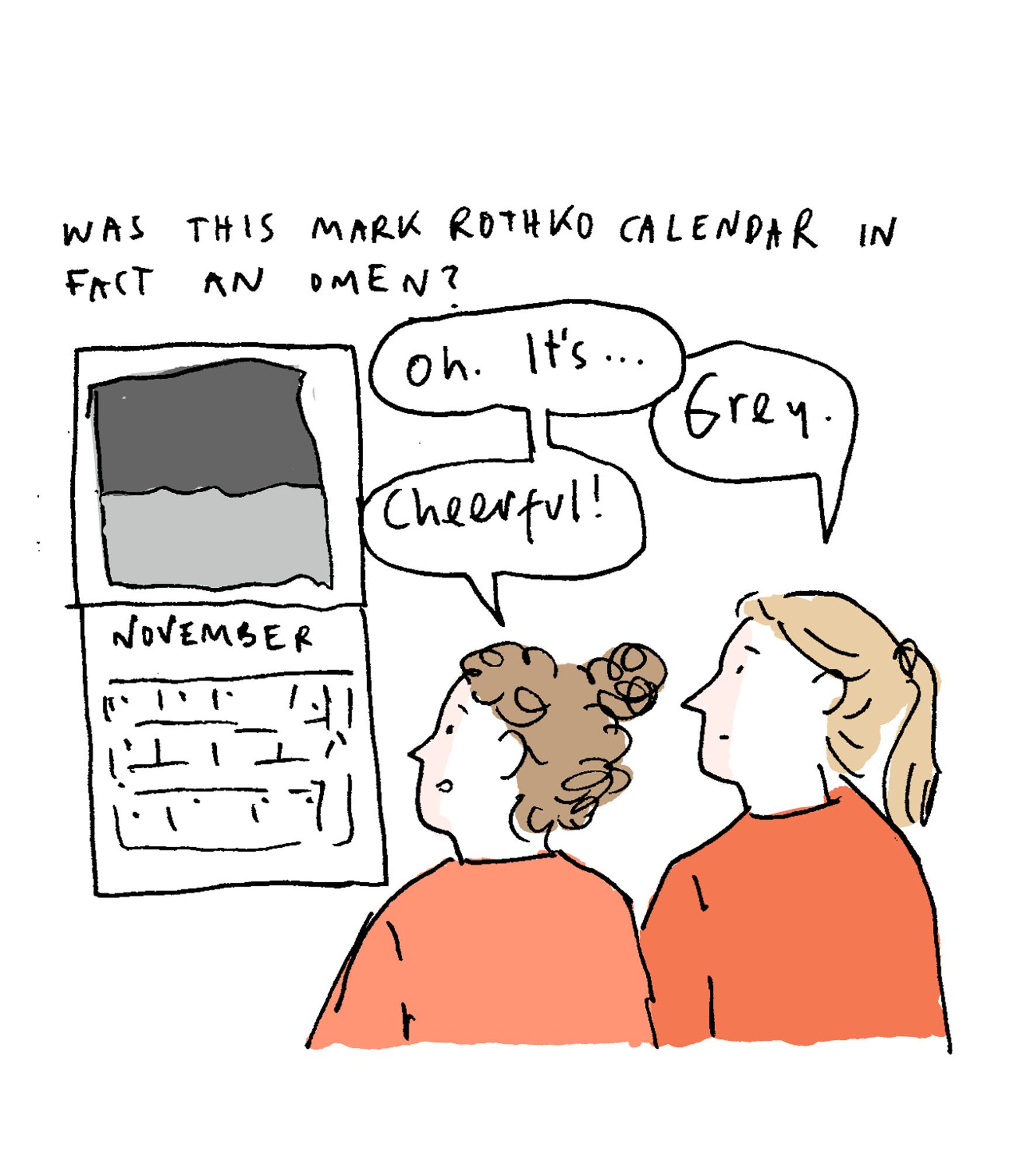
Sometimes, this research can take me into unexpected directions. When I was writing about my sinusitis and researching Eustachian Tube Dysfunction, I fell down a rabbithole, reading about antomy, ears, Eustachi himself. I included some of this in the comic, but I probably could write a whole additional comic about the history of anatomy based on my notes...
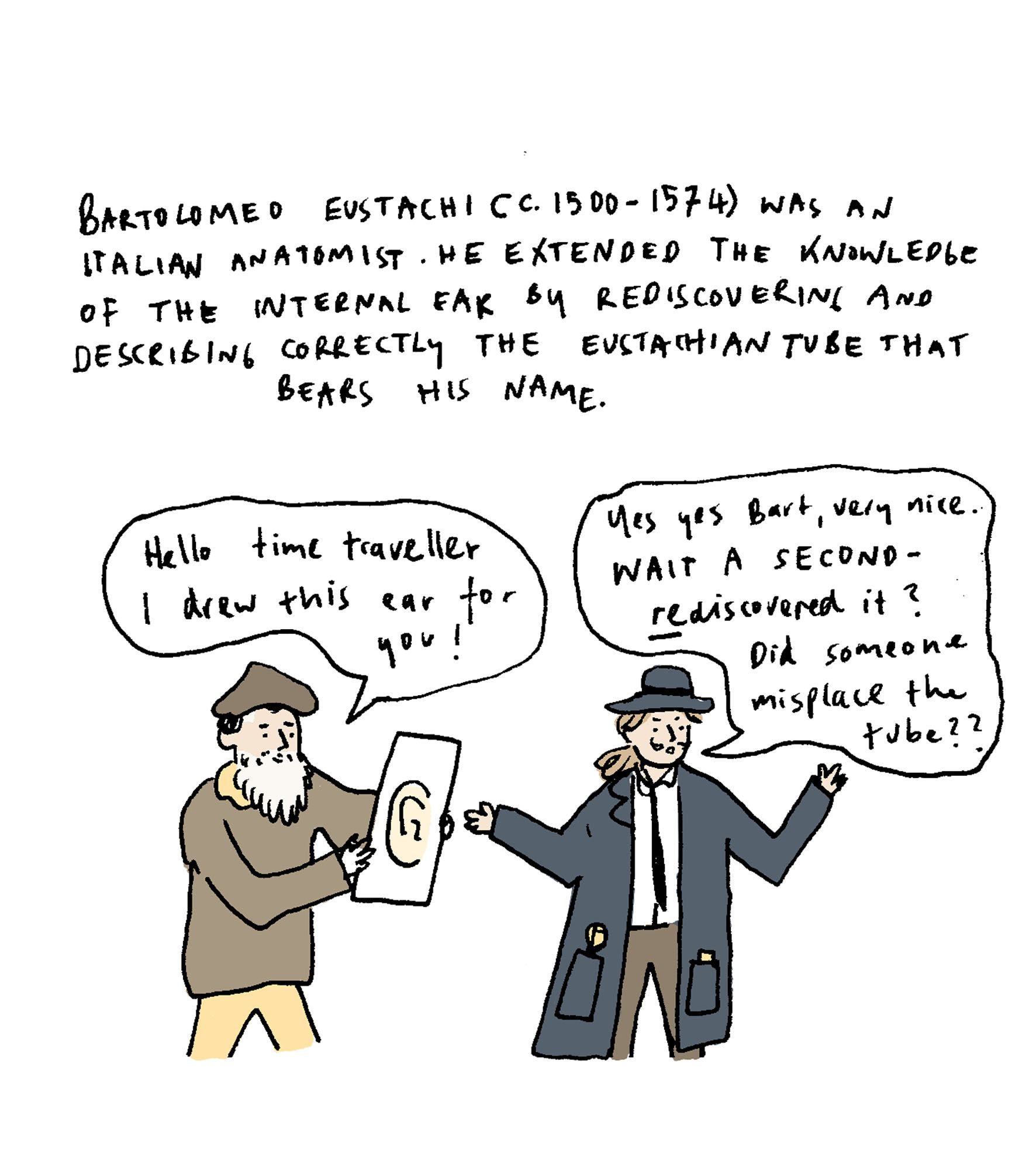
I certainly had not planned for the above (frankly bizarre) panel to be part of my story, but I really do enjoy just going down the corridors that open up as I'm working on something. Sometimes it leads me to learn something unexpected, which might be one of my favourite things in life.
While I was working on Part 7, I decided that it would be funny to title it "I Beseech Thee!" and run with the whole medieval theme implied just by that old-fashioned phrase. I wish I could say that this makes more sense when you read the comic, but I am not sure that it would - just go with it, ok?
I knew I'd draw myself as a sort of knight - which led to a very pleasant morning spent researching and drawing helmets. I thought I'd share my brainstorming/modelling of helmets for your entertainment.
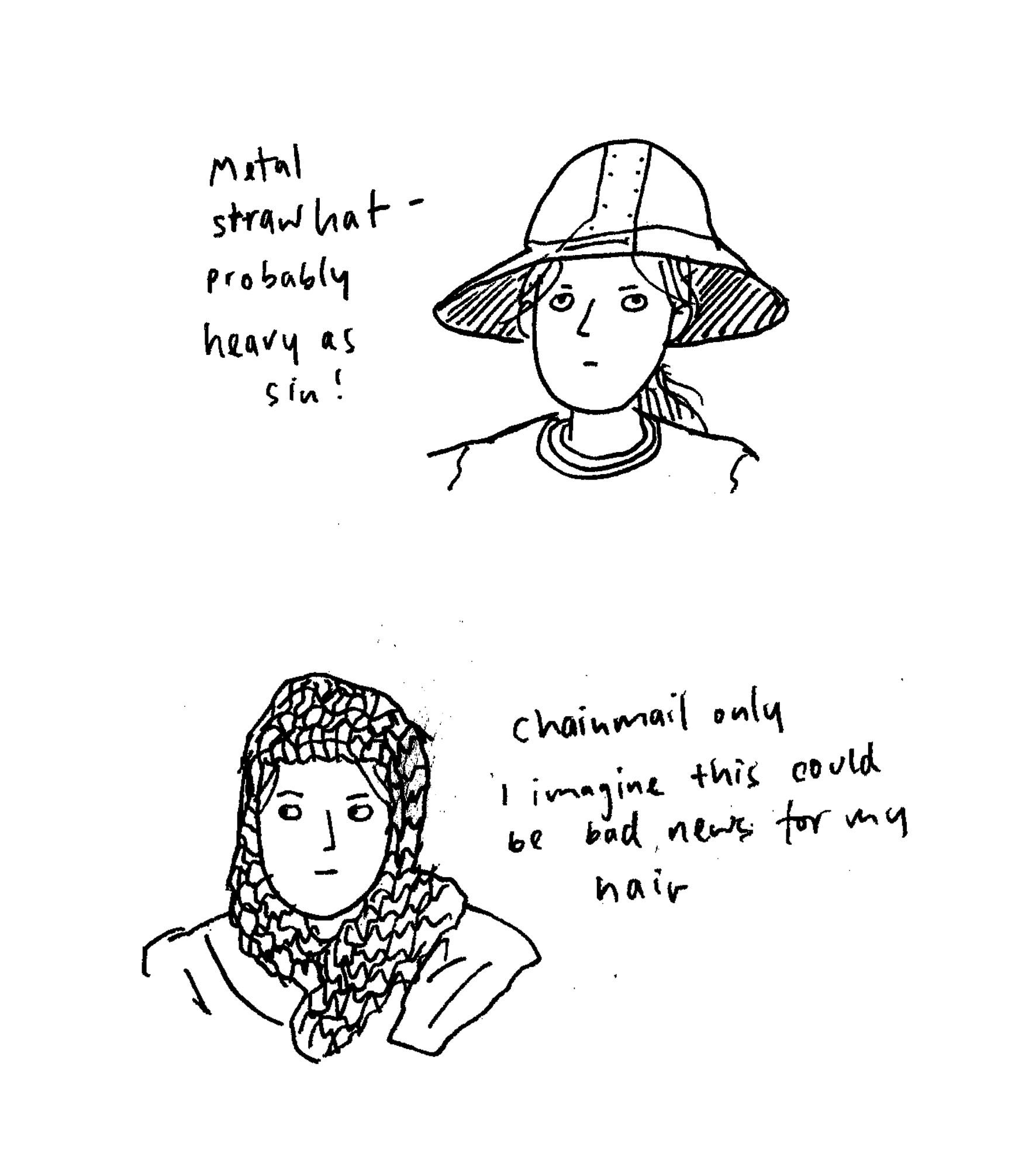
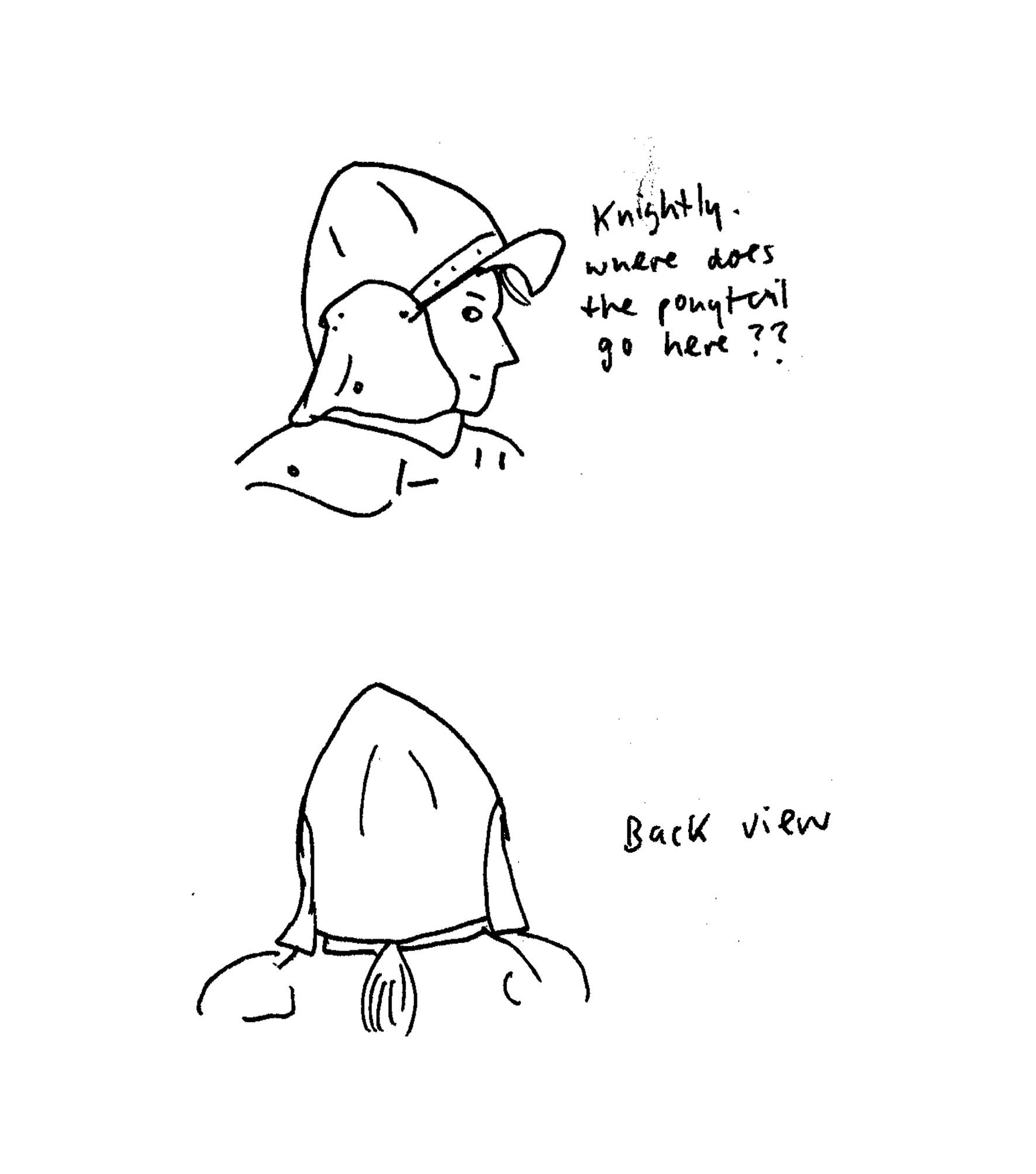
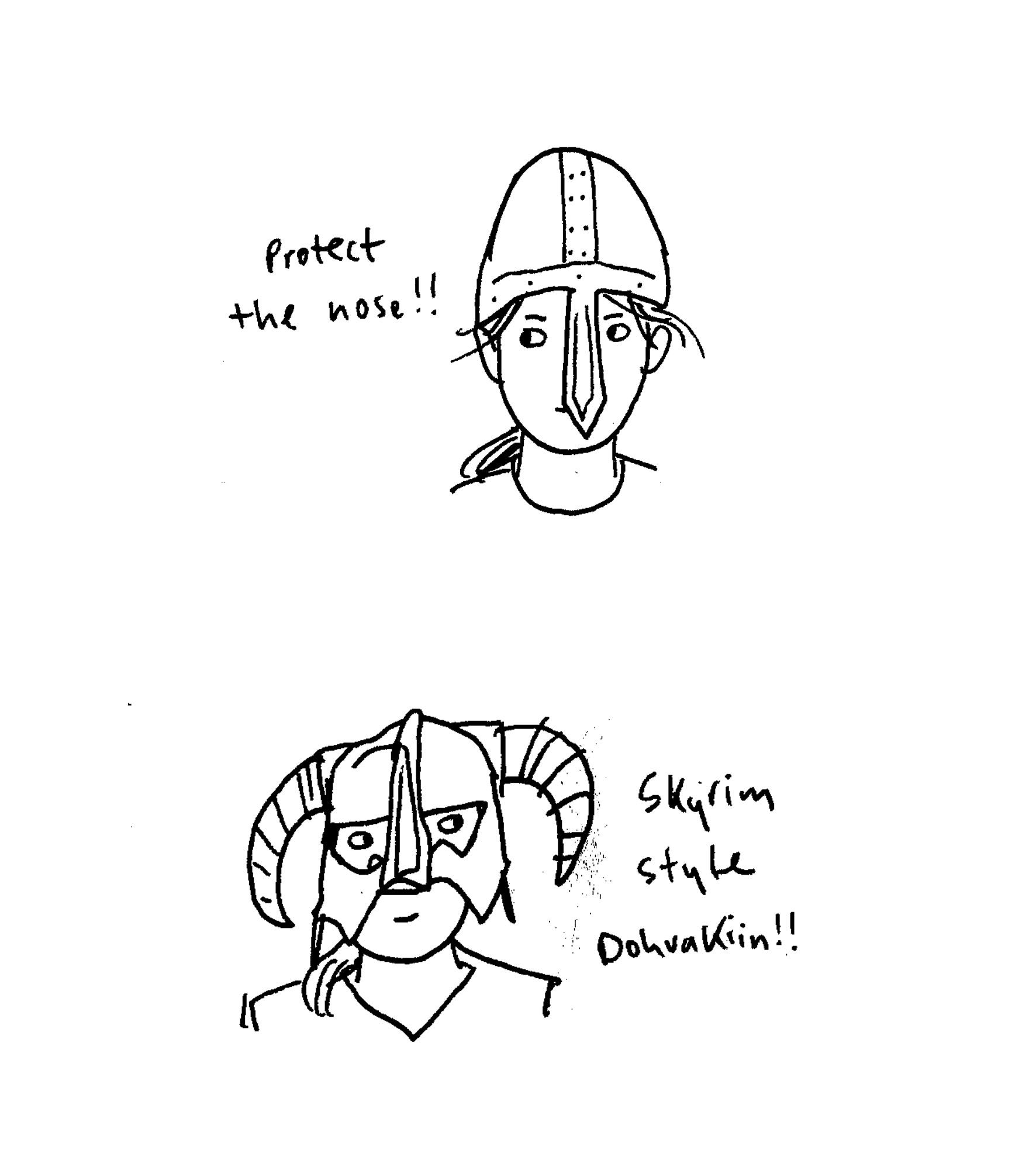
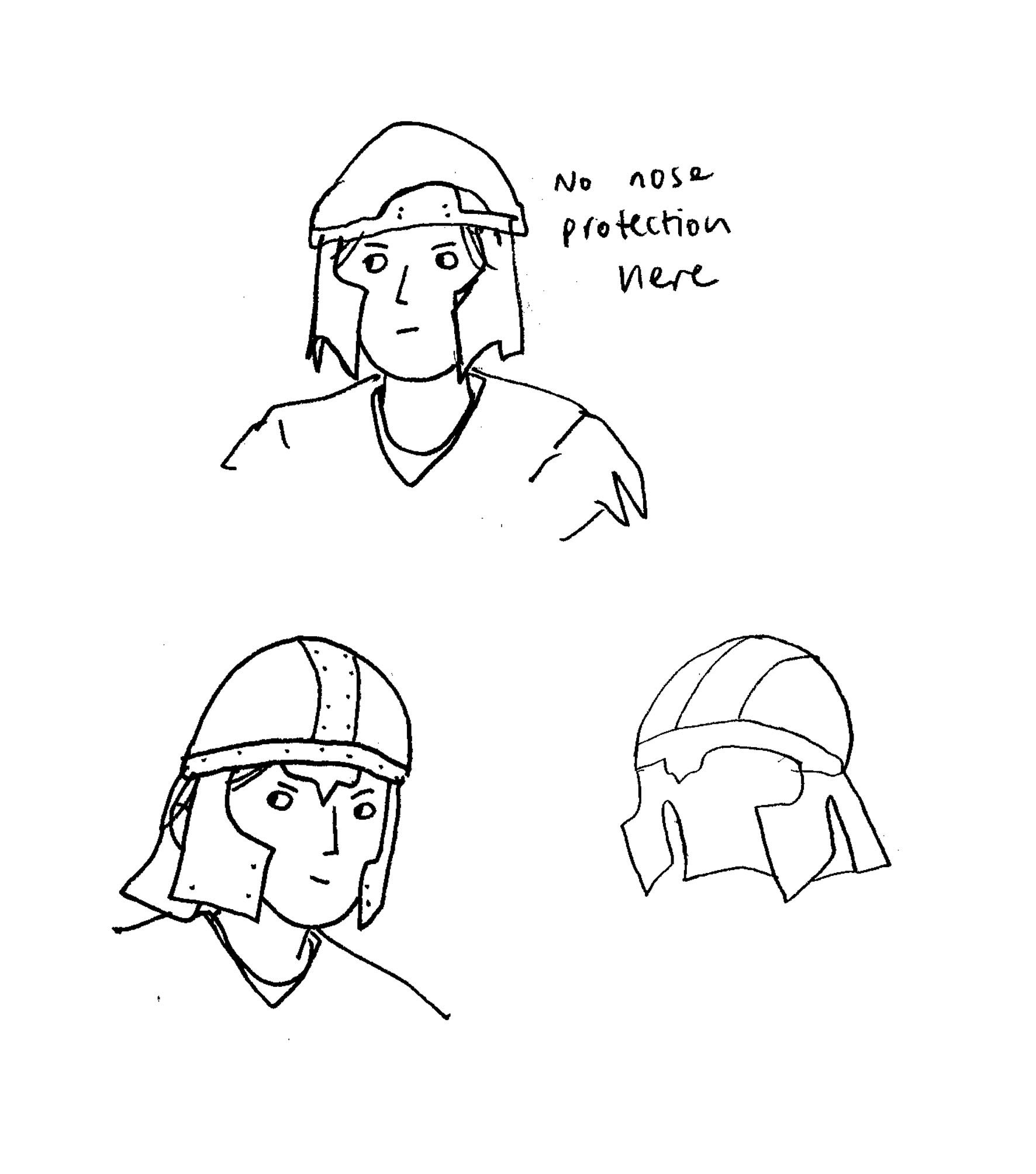
What I learned here is that my idea of what makes a good-looking helmet seems to be exclusively influenced by Skyrim, a game I used to play a lot. You might notice, if you have visited Tamriel yourself, that the shape I picked in the end is not a million miles away from the helmets the Imperial soldiers wear. For the glory of the Empire! Sorry. I figured I might as well be honest about my influences.
Funnily enough, there's another video game influence I would like to mention here. At the time of writing the story, I was playing Pentiment, a game where you play a 16th century scribe in a monastery, rendered entirely in medieval art.
Inspired by those visuals, I knew I'd want to include a drawing of a goose somewhere, as I'm a big fan of geese. I consulted this page with images of medieval drawings of them to help me, and this is what I came up with:
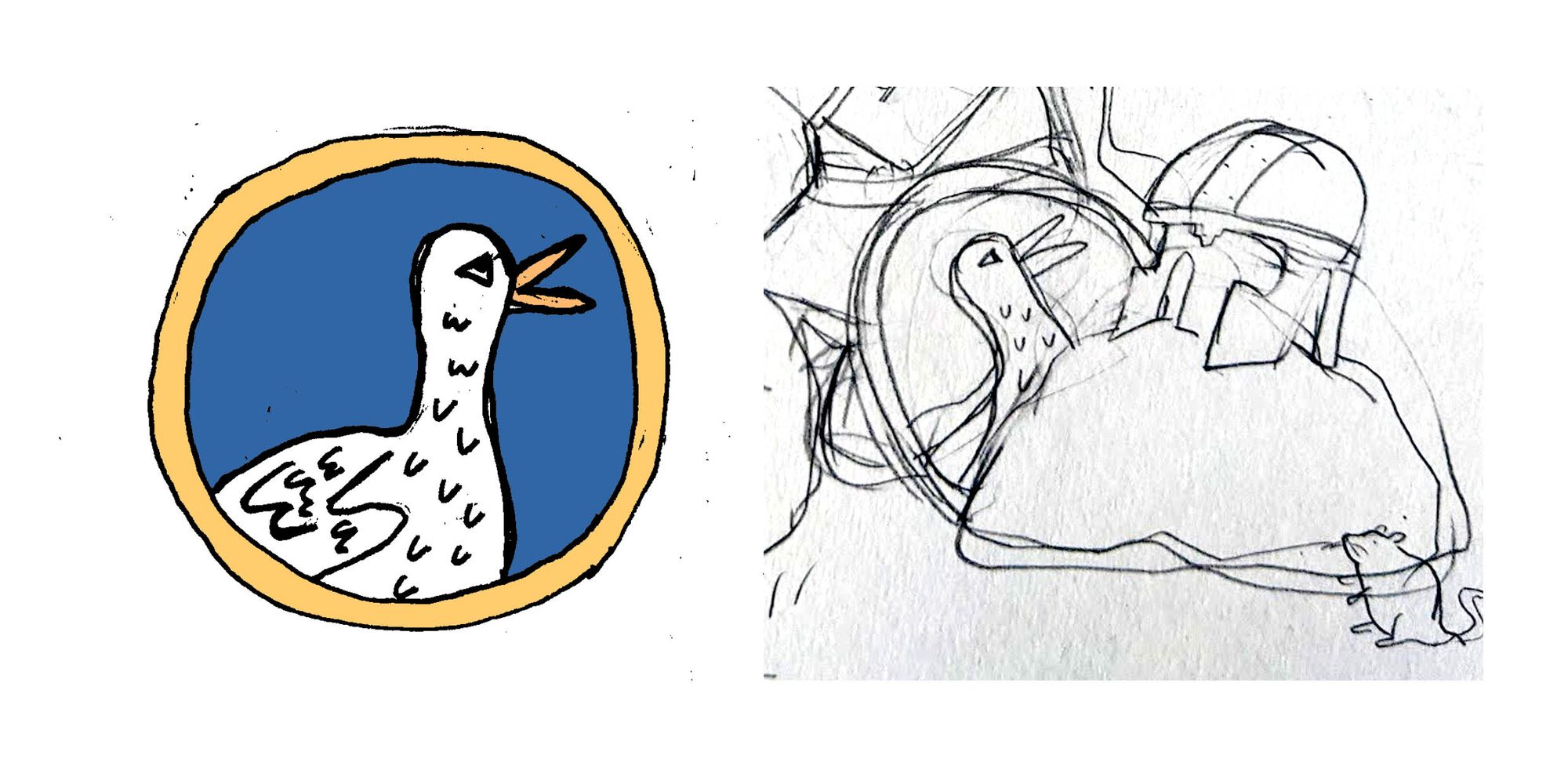
If you, like me, are interested in learning things in unexpected places and are at all interested in games, I would recommend checking out Pentiment, it's a very unusual game. Oh, I could go on and on now about how amazing it is that there's a video game that lets you relate to what it might have been like to live in the 16th century, or how little seems to have changed, or how much has changed. But this post is already too long!
I hope that I've explained everything alright, but if you have have any questions or thoughts, please do get in touch.
Take care,
L x

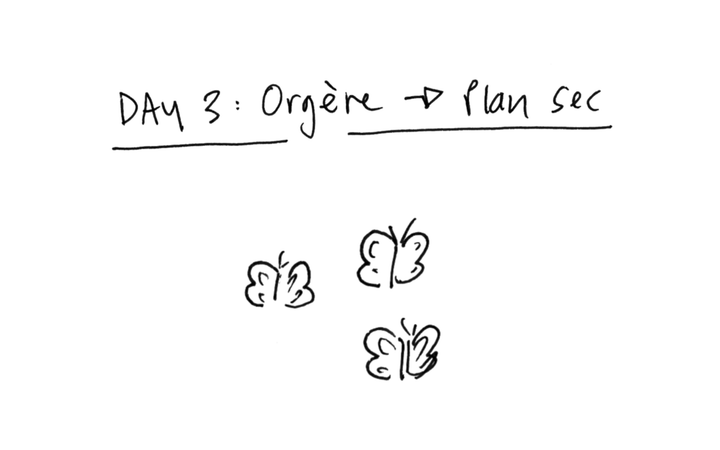
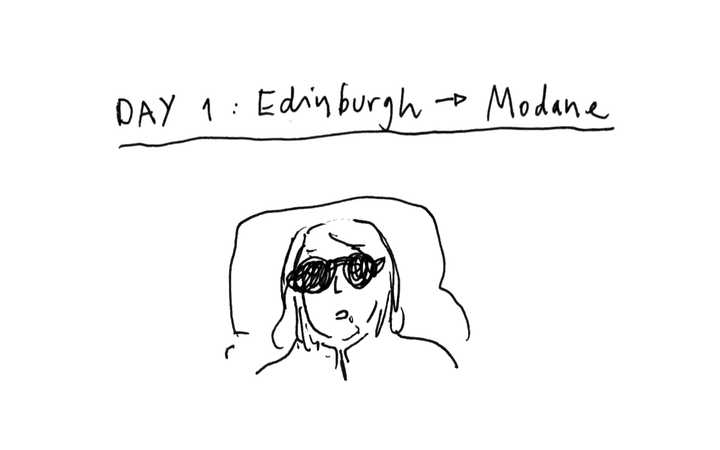
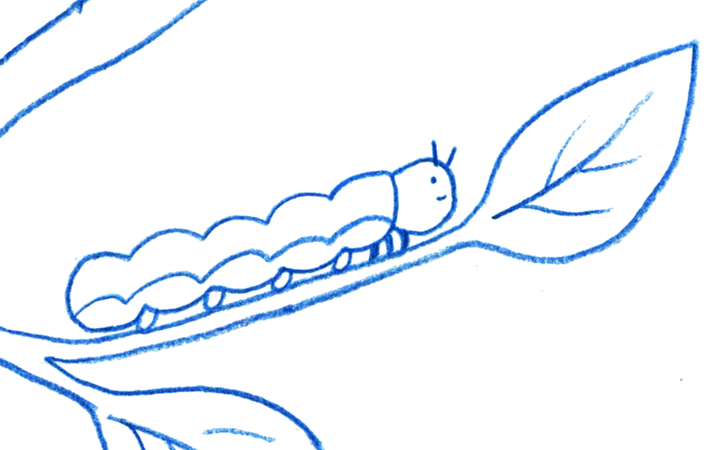
Comments ()